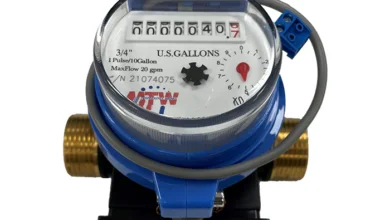The domino effect in supply chains: stopping small glitches from growing into major disruptions

Imagine how quickly one small glitch in your supply chain can create a wave of headaches across your entire operation. A delayed shipment from a supplier might cause a production slowdown. That slowdown can leave distributors waiting on stock, and frustrated customers may find empty shelves. This cascading effect can feel impossible to stop once it’s in motion. The good news is that you can catch these issues early and avoid full-blown chaos—all by managing your inventory with the entire supply chain in mind.
Spotting chain reactions before they spread
It’s tough to see the real roots of a problem if you focus only on one part of the business. Say your distribution center notices a sudden spike in demand and orders more products from the factory. However, if the factory is already at maximum capacity, raw materials start stacking up in the warehouse instead. Soon, extra storage fees add up, production runs fall behind schedule, and shipping delays multiply.
To prevent these chain reactions, you need real-time visibility across every link. That doesn’t have to mean fancy software right away—weekly check-ins and clear data sharing can be enough to spot a bottleneck. Maybe a supplier is short on labor, or a transport route has limited capacity. When you see those warning signs early, you can shift resources before your warehouse overflows or your production line grinds to a halt.
Placing buffers where they count
Buffers act like shock absorbers for your supply chain. They give you a small cushion if something unexpected happens, like a late delivery or a surge in demand. The trick is not to go overboard and store excess goods at every turn. Some businesses try that and end up tying up massive amounts of capital in unused inventory.
Instead, figure out which points in your chain are most vulnerable. Is there a crucial supplier that sometimes runs behind? Placing extra inventory there might protect you from a last-minute scramble. But if there’s a stage that flows consistently, there’s no need to clog it with surplus stock. By balancing these buffers, you’ll have enough coverage to handle disruptions without hemorrhaging cash.
Keeping everyone in the loop
A major cause of supply chain chaos is miscommunication. One department might ramp up output without telling logistics. Another might accept bulk discounts on raw materials, not realizing the factory can’t handle the extra load. Before anyone knows it, the purchasing and production teams are pointing fingers at each other while warehouses struggle to find space.
To avoid these standoffs, make sure each department has the bigger picture. A short weekly meeting or a shared dashboard can help your teams see how one decision affects the entire chain. If marketing plans a big promotion, production, warehousing, and distribution should all know so they can scale up in time. That way, nobody is blindsided by a sudden spike in orders, and you don’t end up short-staffed or short on stock.
Balancing automation with a human touch
Technology can do a lot of the heavy lifting: automated alerts when certain inventory levels drop or real-time data on shipping delays. But no system can replace the judgment of experienced staff. A software platform might flag that your raw materials are enough to last two weeks. Yet your warehouse manager might notice that a particular product always sells out faster after a holiday. If the software doesn’t catch that nuance, you risk a shortage.
That’s why blending data-driven tools with human oversight is so powerful. Let machines handle the straightforward tracking. Then, encourage your team to dig deeper when they see unusual trends or suspect a future surge. This approach lets you pivot more quickly and keeps you from relying on algorithms alone.
Breaking free from crisis mode
Some companies treat every unexpected delay or shortage as a one-time emergency. They scramble to fix it, move on, and hope it doesn’t happen again. But crisis mode is a habit, and it drains morale and resources. Instead, adopt a mindset that aims to spot and solve underlying causes. If a supplier keeps falling behind, is it time to shift to a more reliable partner? If raw materials always clog your warehouse, maybe your reorder points need adjusting.
A proactive, all-inclusive view of inventory managementhelps you break this cycle. Think of each issue as part of a bigger system. When you do, you can fix small glitches before they grow into chain-wide fiascos. Your team also gains confidence in their processes rather than fearing the next urgent fire drill.
Building a resilient foundation
Taking a holistic approach to your supply chain means checking how every link fits together rather than focusing on each piece in isolation. When everyone—from suppliers to final retailers—openly shares important details, it’s much easier to avoid last-minute crises. Your customers will love finding your products on the shelf whenever they need them, and you can handle sudden dips or surges in demand without scrambling at the last minute.
Over time, this steady environment leads to fewer last-minute emergencies and stronger relationships with your partners. You’ll also free up energy to spend on growth and innovation instead of playing catch-up. In a world where a single bottleneck can derail an entire chain, managing your inventory comprehensively keeps the dominoes standing—no matter how many nudges come your way.





